Types of ML#
Supervised Learning#
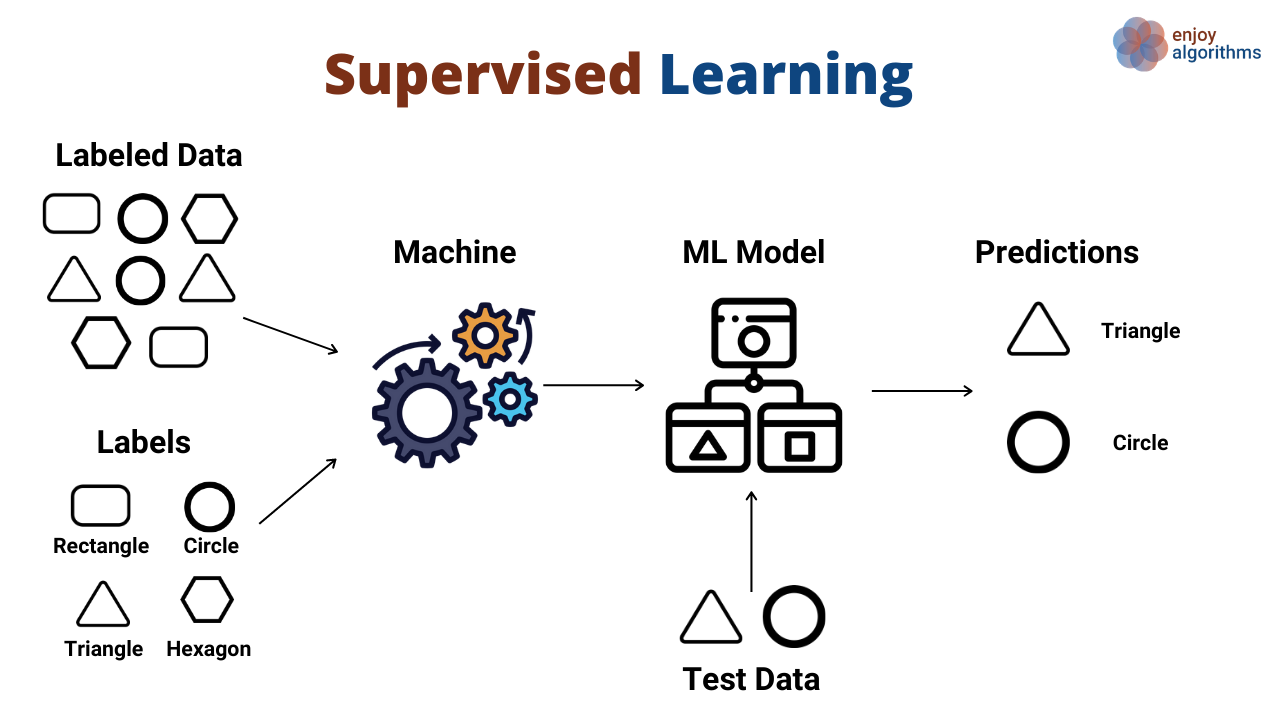
Supervised learning is a popular category of machine learning algorithms that involves training a model on labeled data to make predictions or decisions. In this approach, the algorithm learns from a given set of input-output pairs and uses this knowledge to predict the output for new, unseen inputs. The goal is to find a mapping function that generalizes well to unseen data.
Now put it more mathematically. Denote
training dataset \(\mathcal D = \{(\boldsymbol x_i, y_i)\}_{i=1}^N\);
features \(\boldsymbol x \in \mathcal X\) (usually \(\mathcal X = \mathbb R^D\));
targets (labels) \(y_i \in \mathcal Y\).
The goal of the supervised learning is to find a mapping \(f\colon \mathcal X \to \mathcal Y\) which would minimize the cost (loss) function
Note that the loss \(\ell(y_i, f(\boldsymbol x_i))\) is calculated separately on each training object \((\boldsymbol x_i, y_i)\), and then averaged over the whole training dataset.
Predictive model#
The mapping \(f_{\boldsymbol \theta}\colon \mathcal X \to \mathcal Y\) is usually taken from some parametric family
which is also called a model.
To fit a model means to find \(\boldsymbol \theta\) which minimizes the loss function
Classification#

Binary classification
\(\mathcal Y = \{0, 1\}\) or \(\mathcal Y = \{-1, +1\}\)
denote model predictions as \(\hat y_i = f_{\boldsymbol \theta}(\boldsymbol x_i)\)
typical loss function is misclassification rate
(1)#\[ \mathcal L(\boldsymbol \theta) = \frac 1N \sum\limits_{i=1}^N \big[y_i \ne \hat y_i\big]\](it actually equals one minus accuracy)
this loss is not a smooth function, that’s why they often predict which is treated as probability of class \(1\), and then use cross-entropy loss
Important
The value \(0\log 0 = 0\) by definition
Example
Suppose that true labels \(y\) and predictions \(\hat y\) are as follows:
\(y\) |
\(\hat y\) |
|---|---|
\(0\) |
\(0\) |
\(0\) |
\(1\) |
\(1\) |
\(0\) |
\(1\) |
\(1\) |
\(0\) |
\(0\) |
Calculate the missclassification rate and cross-entropy loss.
To avoid such problems with loss (2) models usually predict numbers from \((0, 1)\), which are interpreted as probabilities of class \(1\).
Multiclass classification
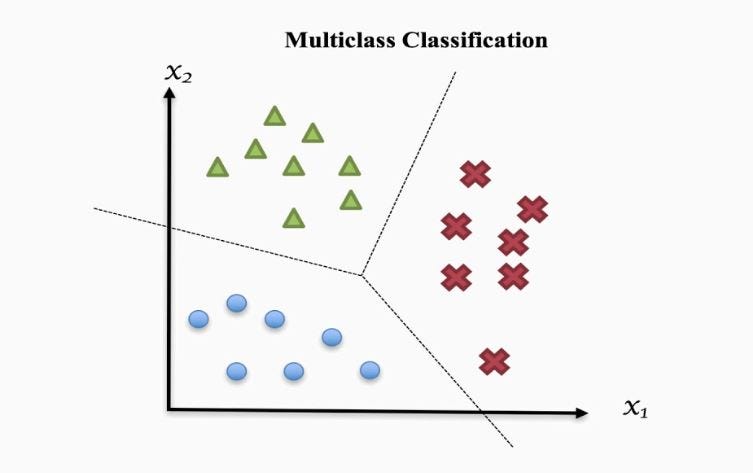
\(\mathcal Y = \{1, 2, \ldots, K\}\)
one-hot encoding: \(\boldsymbol y_i \in \{0, 1\}^K\), \(\sum\limits_{k=1}^K y_{ik} = 1\)
\(\hat{\boldsymbol y}_i = f_{\boldsymbol \theta}(\boldsymbol x_i) \in [0, 1]^K\) is now the vector of probabilities of belonging to class \(k\):
\[ \hat y_{ik} = \mathbb P(\boldsymbol x_i \in \text{ class }k) \]the cross-entropy loss is now written as follows:
Example
Classifying into \(3\) classes, model produces the following outputs:
\(y\) |
\(\boldsymbol {\hat y}\) |
|---|---|
\(0\) |
\((0.25, 0.4, 0.35)\) |
\(0\) |
\((0.5, 0.3, 0.2)\) |
\(1\) |
\(\big(\frac 12 - \frac 1{2\sqrt 2}, \frac 1{\sqrt 2}, \frac 12 - \frac 1{2\sqrt 2}\big)\) |
\(2\) |
\((0, 0, 1)\) |
Calculate the cross-entropy loss (3). Assume that log base is \(2\).
Regression#
\(\mathcal Y = \mathbb R\) or \(\mathcal Y = \mathbb R^n\)
the common choice is the quadratic loss
\[ \ell_2(y, \hat y) = (y - \hat y)^2 \]then the overall loss function — mean squared error:
\[ \mathcal L(\boldsymbol \theta) = \mathrm{MSE}(\boldsymbol \theta) = \frac 1N\sum\limits_{i=1}^N (y_i - f_{\boldsymbol \theta}(\boldsymbol x_i))^2 \]
If the function \(f_{\boldsymbol \theta}(\boldsymbol x_i) = \boldsymbol {\theta^\top x}_i + b\) is linear, then the model is called linear regression.
Example of one-dimensional linear regression (figure 1.5 from [Murphy, 2022]):
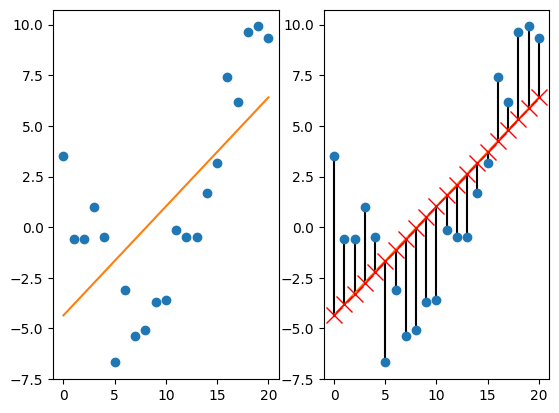
Q. Suppose that training dataset has only one sample (\(N=1\)) and one feature (\(n=1\)). How would linear regression look like in this case? What if \(N=2\)?
Unsupervised learning#
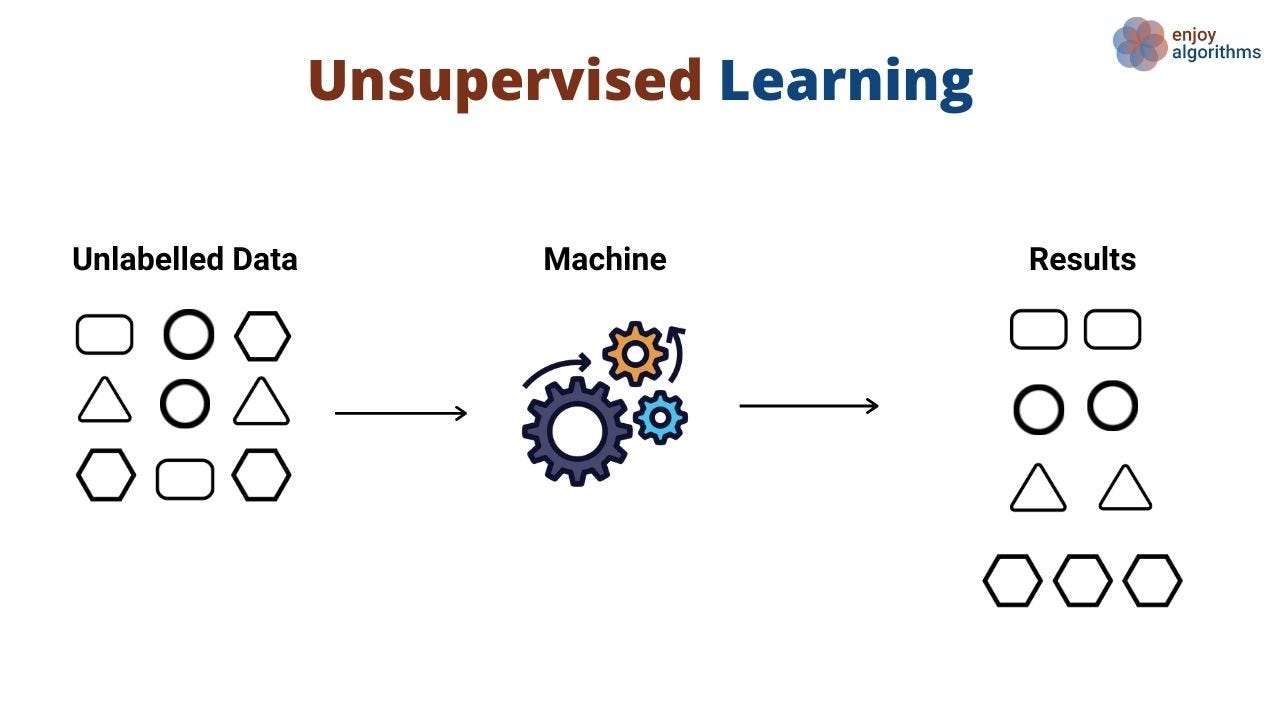
No targets anymore! The training dataset \(\mathcal D = (\boldsymbol x_i)_{i=1}^N\).
Examples of unsupervised learning tasks:
clustering
dimension reduction
discovering latent factors
searching for association rules
Clusterisation made on Iris dataset (figure 1.8 from [Murphy, 2022]):
---------------------------------------------------------------------------
ModuleNotFoundError Traceback (most recent call last)
Cell In[5], line 7
5 from sklearn.mixture import GaussianMixture
6 from sklearn.datasets import load_iris
----> 7 import seaborn as sns
9 iris = load_iris()
10 X = iris.data
ModuleNotFoundError: No module named 'seaborn'
Semisupervised learning#
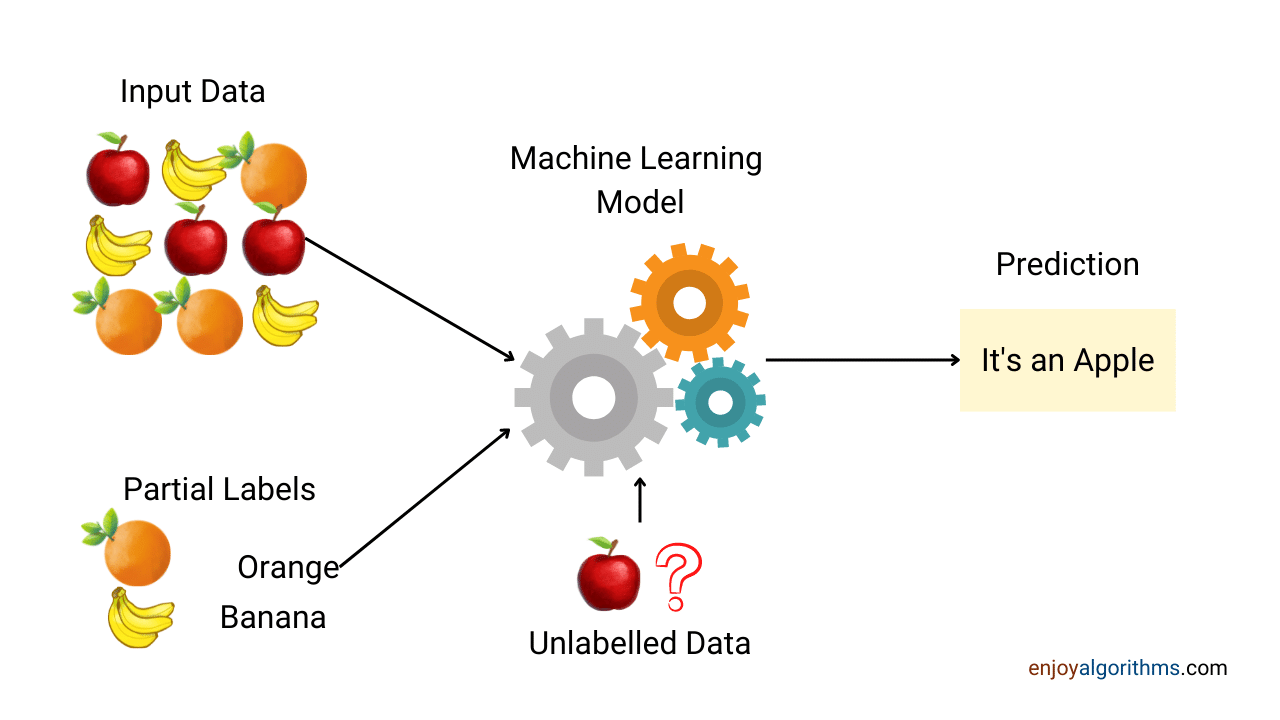
Semi-supervised learning comes into play when you have a dataset that contains both labeled and unlabeled data. Semi-supervised learning is often used in scenarios where obtaining labeled data is expensive, time-consuming, or otherwise challenging.
Reinforcement learning#
Reinforcement learning is a machine learning paradigm where an agent learns to make sequential decisions by interacting with an environment. It aims to maximize a cumulative reward signal by exploring actions and learning optimal strategies through trial and error.
TODO
Pictures from the internet is a temporary solution, try to create original ones
Add a subsection about dummy model (move something from the next chapter if necessary)
Write more about ML beyond supervised learning
Convert \(N\) and \(D\) into \(n\) and \(d\)
